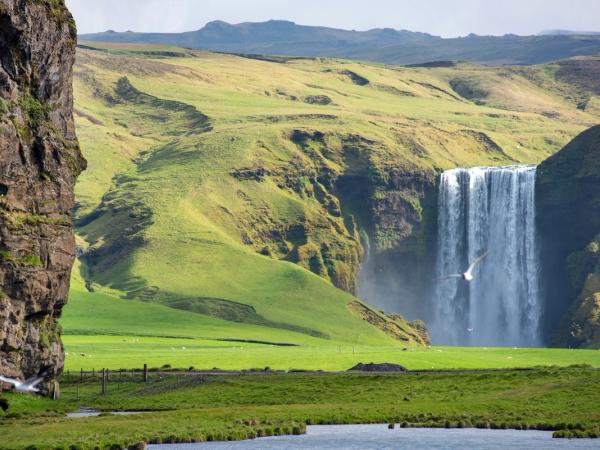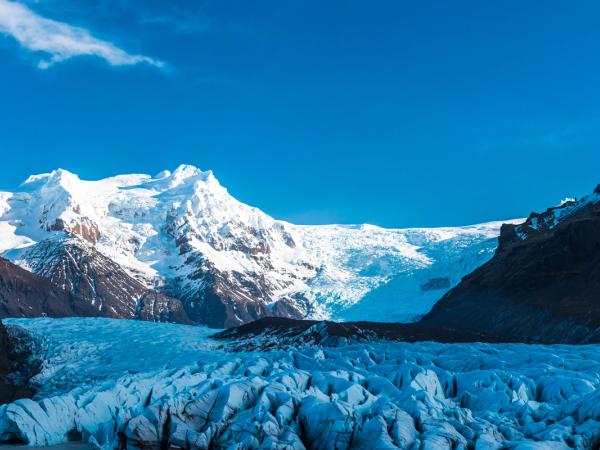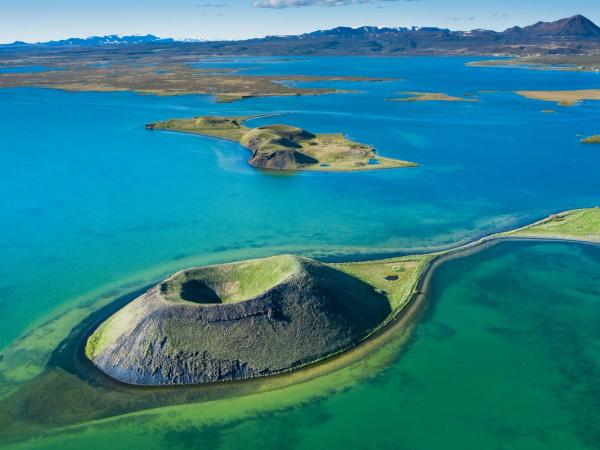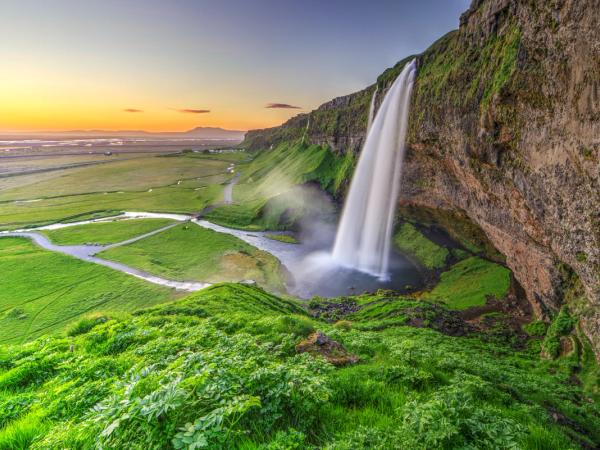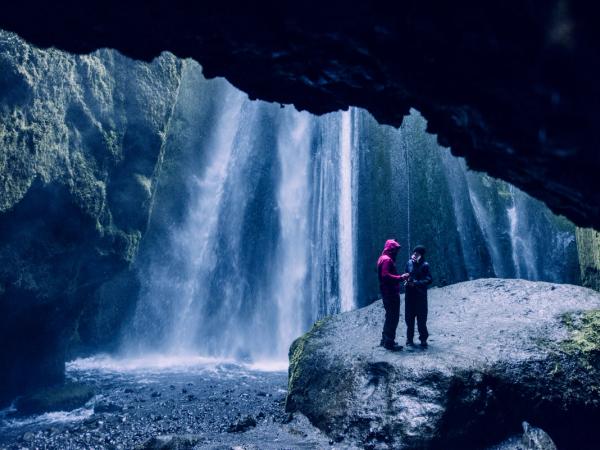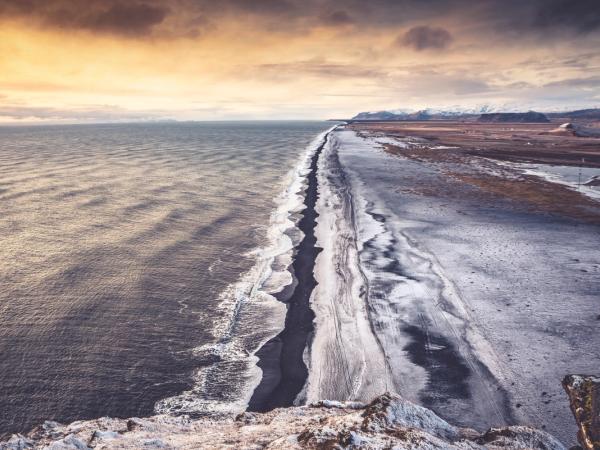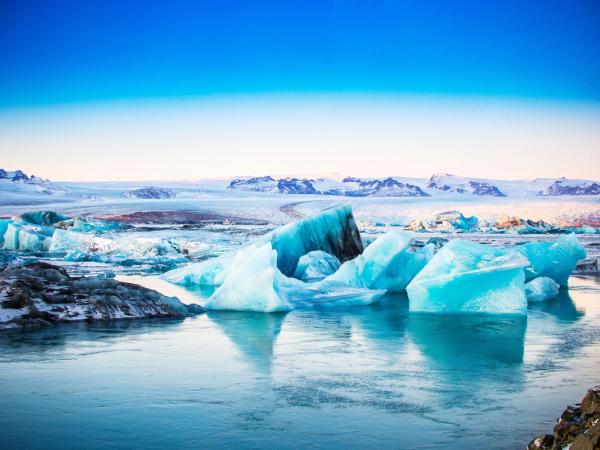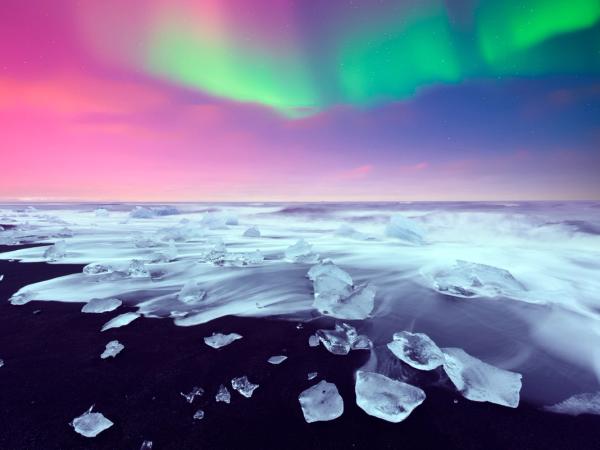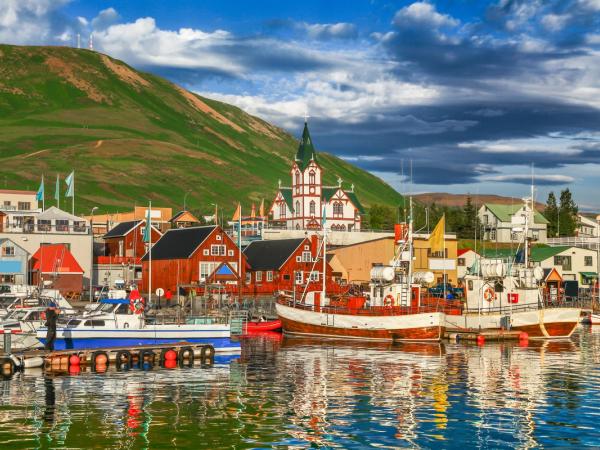
The Ultimate 2025 Guide to Iceland's Ring Road
The Ring Road in Iceland spans 1,332 kilometers (about 828 miles), roughly the same distance as driving from Boston to Charlotte or from Cologne to Barcelona. While it’s possible to drive it in about 17 hours non-stop, the real adventure lies in exploring its wonders.
Circling the entire country, it’s a ready-made road trip through Iceland’s wild and ever-changing landscapes. Iceland is so wildly different from its neighbors: North America on one side, Europe on the other. There aren’t many destinations that you can get to in such a short flight where the scenery feels pulled from another planet – towering waterfalls, mossy lava fields, and eerie black-sand beaches, all of which can be visited in a single day.
This article will help you plan your Ring Road adventure perfectly. You'll find essential information about itineraries, driving tips, and worthy side trips. Our guide covers everything you need, whether you plan a quick 7-day trip or a relaxed 14-day experience around Iceland's legendary Ring Road.
What is Iceland's Ring Road? A Complete Overview
Route 1, known locally as the Ring Road (or Hringvegurinn in Icelandic), encircles Iceland, connecting major towns and spectacular landscapes. It traverses some of Iceland’s most remarkable landscapes and serves as the country’s most vital transport route.
It was completed in 1974, when the construction of bridges across Skeiðarársandur in the southeast finally connected the entire ring together.
The Ring Road has seen substantial traffic growth thanks to Iceland’s tourism boom. The combined daily vehicle count rose from 57,000 in 2005 to more than 90,000 in 2019 to about 125,000 in 2023.
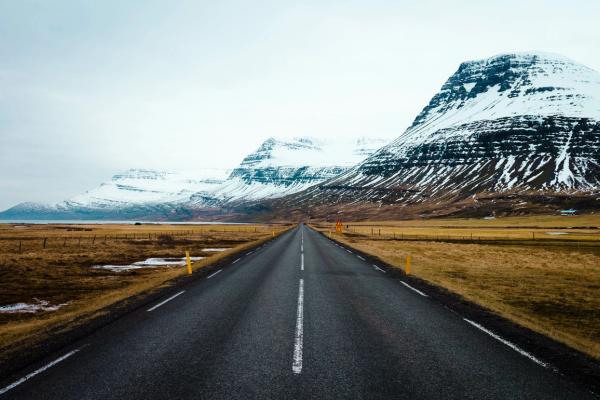
Why the Ring Road is Iceland's Most Popular Road Trip
The Ring Road's popularity as Iceland’s ultimate road trip lies in its seamless access to the country's most spectacular attractions. Travelers can visit breathtaking landmarks and return to Reykjavík without retracing their route. Highlights along the way include:
- Seljalandsfoss and Skógafoss waterfalls
- Reynisfjara Black Sand Beach
- Jökulsárlón glacier lagoon and Diamond Beach
- Lake Mývatn
- Dettifoss and Goðafoss waterfalls
On top of that, it covers all regions but a few – the Highlands, the Westfjords, and the Snæfellsnes Peninsula – although the latter is an easy detour to make if you have some spare time. In short, it’s the perfect way to see a lot of Iceland’s vast and varied landscapes without having to decide between different regions.
Planning Your Ring Road Adventure: When to Go
Choosing when to drive on the Ring Road depends on what experiences you're after: midnight sun, northern lights, or fewer crowds.
Driving Iceland’s Ring Road in Summer
Summer is, of course, the most popular time to drive Iceland's Ring Road. From May through August, Iceland experiences stable weather and nearly endless daylight – perfect conditions for extended exploring. June gives you 20-21 hours of sunlight, which is a great chance to explore more of the country later in the evenings. Even in July, you’ll still have 18–21 hours of daylight – more than enough time for long hikes, scenic detours, and spontaneous stops.
Summer brings milder temperatures and better weather overall. The roads stay in good shape, with few closures or construction delays. Best of all, summer lets you access Highland roads (F-roads), so you can explore every corner of the country if you have a 4x4 and aren’t afraid to ford glacial rivers.
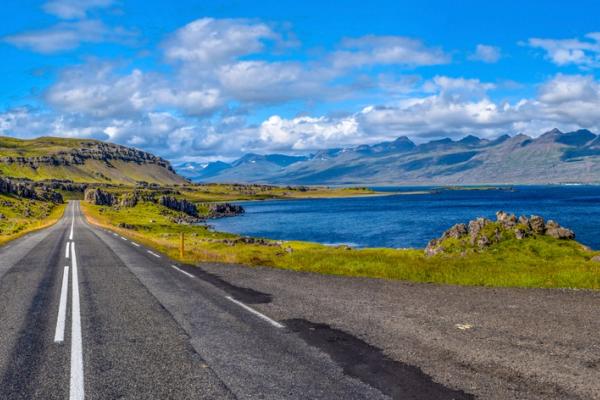
Driving Iceland’s Ring Road in Winter – is it possible?
Yes, driving Iceland’s Ring Road in winter is possible, provided you're prepared for sudden weather changes, limited daylight, and occasional closures. From November through to March (sometimes even later), the country is likely going to be blanketed in snow. High snowfall can make the ring road impassable in places, and major storms can shut down travel altogether.
However, since the ring road is the only way to get between towns in the country, the Icelandic authorities prioritize making it accessible as soon as possible if it has closed for some reason.
There are some big challenges to consider if planning to drive the ring road in winter:
- December and January only give you 4-5 hours of daylight
- Weather changes without warning
- Strong winds can push your car around
- Black ice makes driving tricky
- Bad weather often closes roads
It takes a lot of planning around driving times and a lot of care when out on the road. But with that said, hundreds of travelers successfully complete the route each winter. With the right prep, it can be one of the most magical ways to see Iceland.
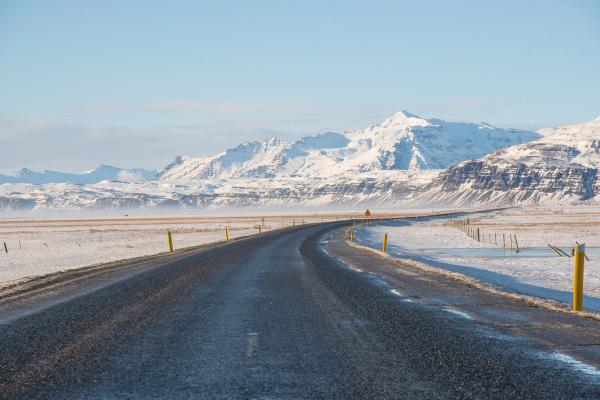
Driving the Ring Road in Spring and Autumn
Weather can be unpredictable in spring and autumn, but these seasons reward travelers with fewer crowds and lower prices. These shoulder seasons are often the sweet spot.
- You'll pay less for places to stay and rental vehicles
- Popular spots aren't as crowded
- Last-minute bookings are easier to get
- You might see Northern Lights without dealing with harsh winter
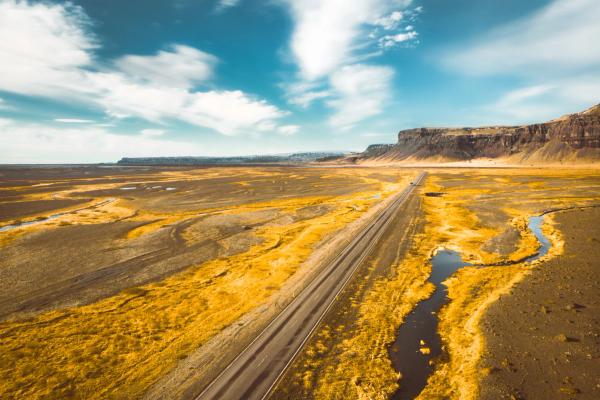
How Long Does It Take to Drive Around Iceland?
If driving non-stop, the Ring Road takes approximately 17 hours – but that leaves no time for stops.
Minimum time requirements (7–14 days)
A minimum of 7 days is recommended, though 10-14 days provides a more enjoyable pace. Although even with a week-long plan, you'll spend several hours driving each day.
A 7-day trip needs careful planning because:
- You might need to skip over some major attractions and hikes
- There will be some longer days of driving
- Bad weather might throw off your schedule
- You'll have less time for unplanned stops
First-time visitors should aim for 8-9 days to get a more relaxed pace – but of course longer is always better when it comes to visiting Iceland. This extra time helps when you find unexpected spots or need to adjust your plans due to weather.
Those who spend 10 to 14 days in Iceland will be able to take the Ring Road more slowly, stop more often, and get out to explore.
Sample itineraries: 7, 10, and 14 days
A 7-day express itinerary usually looks like this:
- Day 1: Arrival & Blue Lagoon
- Days 2-3: Golden Circle & the South Coast
- Days 4-5: Southeast Iceland & the East Fjords
- Days 6-7: North & West Iceland
As you can tell from this brief breakdown, it’s a bit rushed, and this plan will involve some long days in the car and passing by a few awesome stops.
The 10-day complete route gives you more options:
- Day 1: Arrival & Blue Lagoon
- Days 2-3: Golden Circle & the South Coast
- Day 4: Vatnajökull National Park
- Day 5: East Fjords
- Day 6: Lake Mývatn & Húsavík
- Days 7: Akureyri & The North
- Day 8: Vatnsnes Peninsula & Northern Snæfellsnes
- Days 9-10: Southern Snæfellsnes & West Iceland
With 10 days for a ring road trip, you’ve got a lot more time to take detours, and you’ll have the opportunity to explore each region as well as a nice detour along the Snæfellsnes Peninsula.
A 14-day trip lets you really explore each stop, or even venture into the remote Westfjords or include some trips on the Highland F-roads.
- Days 1-2: Arrival, Blue Lagoon, & the Golden Circle
- Days 3-5: The South Coast & Glacier Experiences
- Days 6-7: East Iceland
- Days 8-9: Mývatn & Akureyri
- Day 10: Tröllaskagi Peninsula & North Iceland
- Days 11-13: Westfjords
- Day 14: Snæfellsnes
If you have less than 6 days, focus on specific regions instead of trying to complete the full circuit. This way, you can really get to know your chosen areas rather than rushing through everything.
Driving in Iceland: Rules, Safety, and Practical Tips
You'll need to understand specific rules and safety measures to become skilled at handling Iceland's unique driving conditions. These differ from other countries. Let's look at the simple guidelines that will keep you safe throughout your Ring Road trip.
Icelandic road signs and regulations
Simple driving regulations in Iceland include:
- Driving on the right side of the road
- Mandatory headlight use at all times
- Required seatbelts for all passengers
- Strict prohibition on handheld phone use
- Speed limits: 90 km/h on paved roads, 80 km/h on gravel roads, 50 km/h in urban areas
Weather challenges and road condition resources
Iceland's climate creates unique challenges. Weather conditions can change dramatically within hours. Check these resources before you start driving each day:
- Road.is: Official website showing immediate road conditions
- Vedur.is: Detailed weather forecasts
- Safetravel.is: Detailed safety information
- Call 1777 (8:00-16:00 on weekdays) to check road conditions
N1 gas stations show live feeds from the Road Administration that display current road conditions nearby. You should be extra careful in remote regions, especially between Vík and Mývatn, where weather patterns can change without warning.
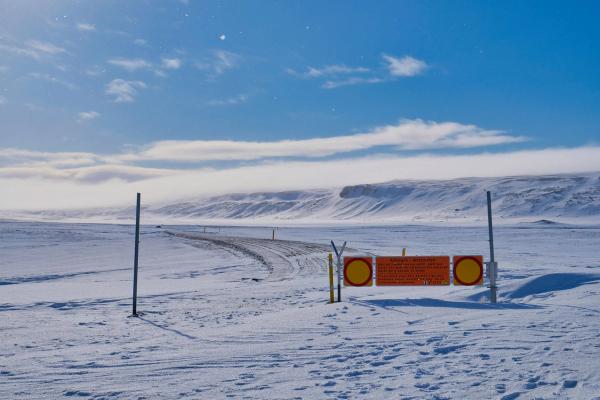
Single-lane bridges and mountain passes
Iceland's Ring Road has many single-lane bridges. Route 1 currently has 32 of them. The simple rule for crossing these bridges is that the vehicle closest to the bridge has the right of way.
Mountain passes need extra attention, especially in winter. Blindhæð (blind hills) require slower speeds and more awareness because you can't see oncoming traffic well. You should also adjust your driving when the road changes from paved to gravel surfaces.
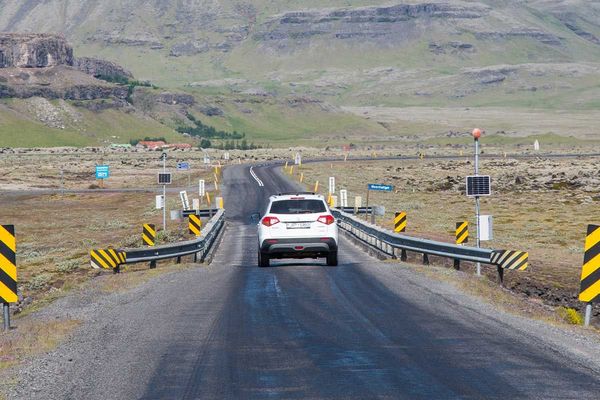
Fuel planning and gas station availability
Planning your fuel stops is vital along the Ring Road because service stations are far apart. Here's what you should know about fueling in Iceland:
- Average fuel prices: 320 ISK (~$2.50 USD) per liter for gasoline, 300 ISK (~$2.30 USD) for diesel
- Major chains: N1 (98 locations), Olís, Orkan, and ÓB
- Most stations need credit cards with 4-digit PINs
- Self-service stations are open 24/7
Always fill your tank when it's half-empty to avoid anxiety over distances between petrol stations.
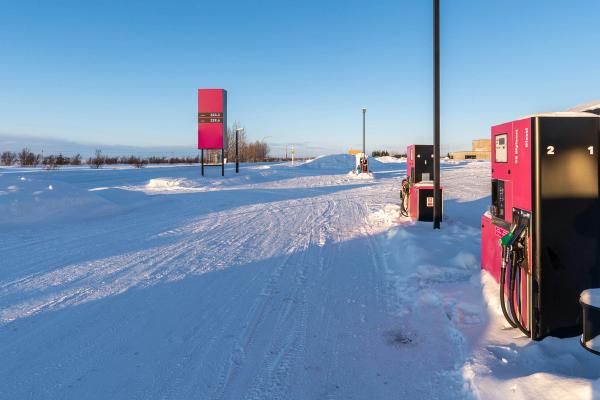
Gravel Roads and Off-Road Driving
Off-road driving – leaving designated roads – is strictly prohibited and carries heavy fines. There are many gravel roads in Iceland, some of which are in quite bad conditions, but these aren’t considered off-road driving. Still, that doesn’t mean you can tackle them without care; insurance doesn’t cover any damage to the undercarriage of vehicles.
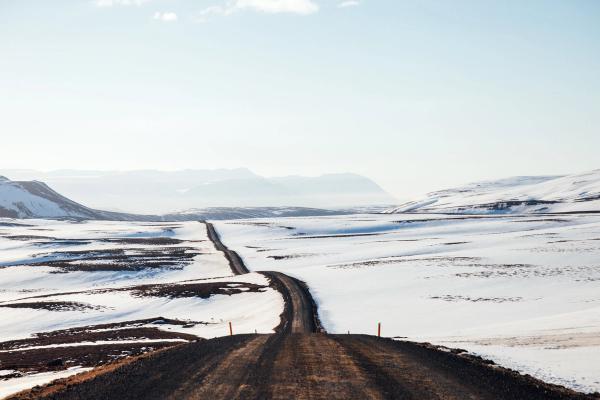
Speed Limits, Tunnels, and Tolls on the Ring Road
The speed limit on Iceland’s Ring Road is 90 kilometers per hour, or 55 miles per hour. There are fixed speed cameras set up around the ring road, and police monitor the roads elsewhere. Like everything else in Iceland, speeding fines are expensive.
There are now two tunnels that make up part of the Ring Road, where the speed limit drops to 70 kilometers per hour (43 mph). The first is the tunnel that dives underneath Hvalfjörður, just to the north of Reykjavik. This tunnel is now toll-free.
The only toll along the Ring Road is at the Vaðlaheiði tunnel (2,110 ISK, or ~$16 USD), just outside of Akureyri. Pay online up to 24 hours before or after your journey to avoid fines (note: you’ll need your vehicle registration plate to pay).
If you don’t want to pay this toll, you can still take the old road over the top of the mountain. However, during winter, this can be snowed in and dangerous – it’s best to only do so in summer.
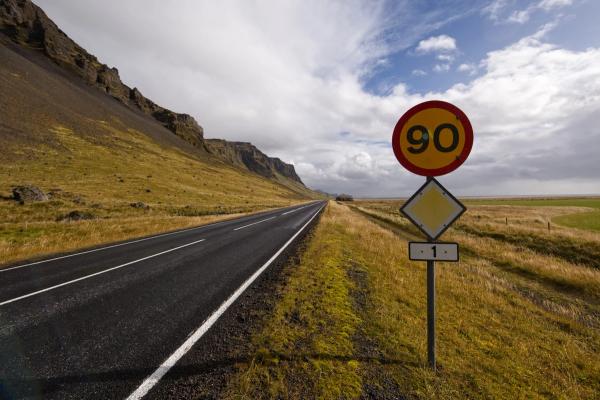
Ring Road Iceland Map: Region-by-Region Highlights
Here are the highlights you'll encounter on your journey around Iceland’s Ring Road.
South Iceland
The southern part of Ring Road shows off Iceland’s most majestic landscapes; this region is characterized by mountain peaks and glinting glaciers, rivers rushing through lush valleys towards the coast of black sand, and powerful waterfalls breaking over the Highland shelf. Along with the Golden Circle, it’s the most popular part of Iceland – and for good reason.
Seljalandsfoss and Skógafoss
Among the first sights you’ll see on the south coast are the waterfalls Seljalandsfoss and Skógafoss, both visible right from the ring road – and as such, impossible to resist. Seljalandsfoss spits off the cliffs above, with a small path that leads behind the waterfall. You can also walk north along the cliff face to find Gljúfrabúi, a second waterfall hidden within the cliffs. Skógafoss is much taller and more powerful, a perfect sheet of white water tumbling off the cliffs, originating from the glacier above.
Dyrhólaey and Reynisfjara
Follow the ring road further south, there are a couple of worthy detours to make towards the south coast before you reach Vik. The first is the peninsula Dyrhólaey, a huge cliff and sea arch that provides astounding views over the entire coastline. Then, there’s Reynisfjara, one of Iceland’s most famous black sand beaches and home to the legendary Reynisdrangar sea stacks in the ocean being battered by the strong tide.
Jökulsárlón Glacier Lagoon and Diamond Beach
The scenery changes as you head over to Vatnajökull National Park, where Europe's largest glacier awaits. Jökulsárlón glacier lagoon steals the show here, as huge icebergs float peacefully before drifting to Diamond Beach. These crystal-clear ice chunks rest on black sand and create a magical sight unlike anything else.
East Iceland
The East Fjords is a rugged stretch of coast where steep cliffs, deep fjords, and jagged mountains make for a dramatic drive.
Stokksnes Peninsula and Vestrahorn Mountain
The first major highlight here is the Stokksnes Peninsula, a vast black sand beach in front of a dramatic mountain range; a postcard picture not to be missed. The fjords themselves here are also spectacular, V-shaped inlets cut along the coast and separated by soaring, jagged mountains. It’s a place where there aren’t many famous sights, but because of the grandeur of the landscapes, even the simplest things become extraordinary – an unnamed waterfall tumbling down a cliff, the sun catching details in the mountains, lonely farms dwarfed by rolling fields.
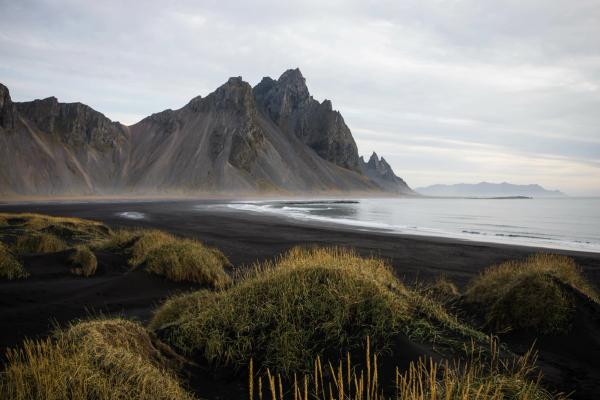
Seyðisfjörður Detour
Near Egilsstaðir, most people will take a detour across the mountain pass to the enchanting town of Seyðisfjörður, one of Iceland’s prettiest spots. Charming and artistic, the surrounding mountains dwarf the Norwegian-style homes here, painted bright colors.
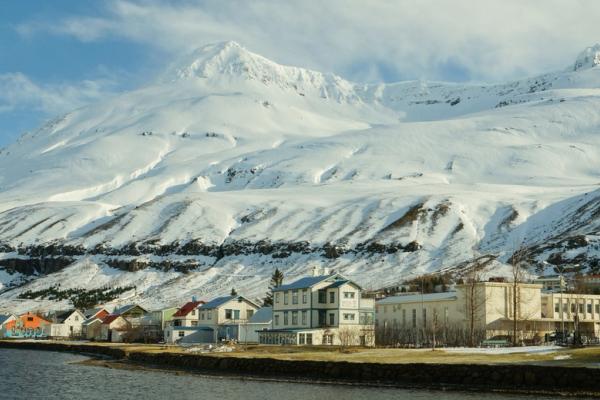
Hengifoss and Vök Baths
In the other direction from Egilsstaðir, there’s the mighty Hengifoss Waterfall, one of the country’s tallest. And Vök Baths just outside of town has quickly become one of the favorite spots for a soak in East Iceland.

Stuðlagil Canyon
Continuing along the ring road through the northeast, another big highlight on the ring road is Stuðlagil Canyon, which in recent years has swiftly become one of the most popular spots on the entire ring road. With twisted basalt columns on either side of steely-blue glacier water, it’s certainly a beautiful spot.
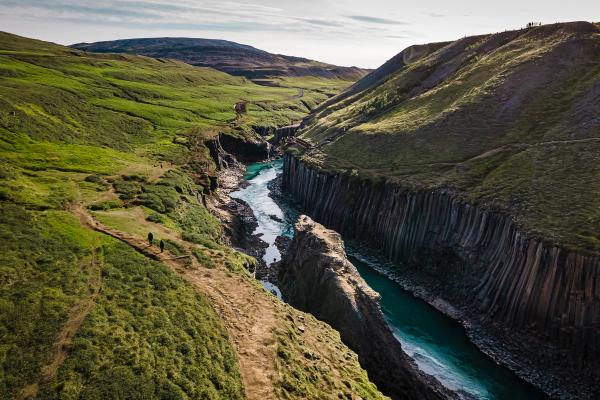
North Iceland
North Iceland shows yet another side of the country's varied landscape – volcanic on one side and rolling green farmland on the other.
Dettifoss Waterfall
A short detour north from the Ring Road takes you to Europe’s second most powerful waterfall, Dettifoss. Contained within its own territory of Vatnajökull National Park, it’s a huge waterfall that is seriously impressive not for its height or width, but for the sheer volume of water that crashes over the edge.
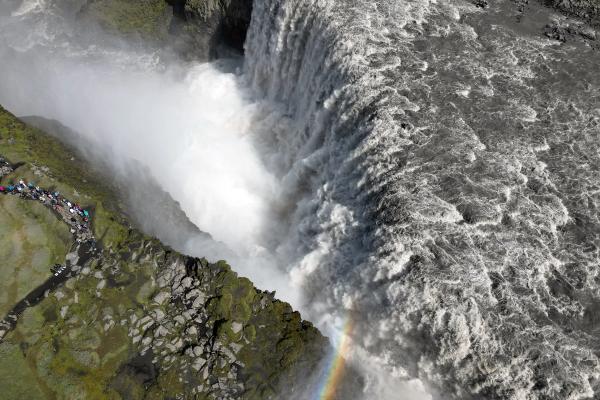
Lake Mývatn Area
Lake Mývatn shines as the region's star attraction - a geothermal paradise surrounded by natural wonders like the Dimmuborgir lava fields and the Hverir geothermal area. A part of the same volcanic system and a short detour from the Ring Road north of Hverir, the Krafla Volcanic Crater is also an incredible sight.
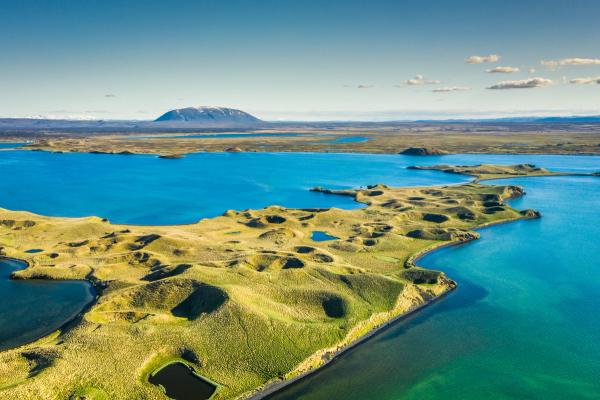
Húsavík Detour and Goðafoss Waterfall
Húsavík earned its nickname as the "Whale Watching Capital of Iceland" by offering excellent chances to see minke and humpback whales in their natural habitat. It’s another popular detour from the Ring Road. From here on, the way to Akureyri is the pretty-as-a-picture Goðafoss Waterfall, where rumor has it a chieftain threw his Pagan idols into the water after Iceland adopted Christianity.
Akureyri
From here, civilization! Akureyri is the largest town in these parts and is considered as Iceland’s ‘second city’ after Reykjavik. It’s a precious place, tidily set on one side of the fjord, while across the water lies one of the newer hot springs in the country, the luxurious Forest Lagoon.
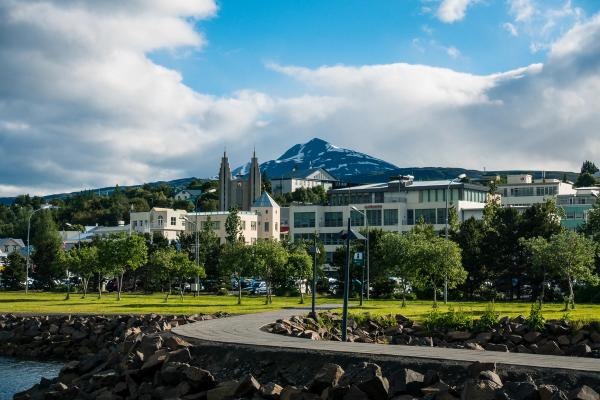
Skagafjörður
After Akureyri, heading across the north takes you through the lovely countryside of Skagafjörður, some of the most sought-after land in Iceland immediately after settlement. There aren’t many major sights, but the landscapes themselves are wonderful, spanning coastal views to deep mountains.
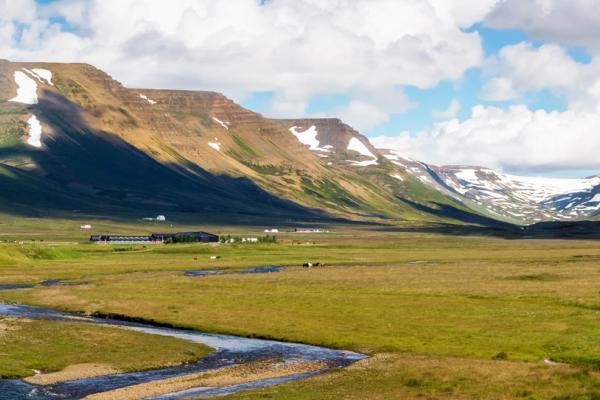
West Iceland & Snæfellsnes
Venturing into West Iceland, there are also only a handful of spots to stop directly on the Ring Road; the real treasures lie in the detours.
Snæfellsnes Peninsula
This western peninsula jutting out above Reykjavik is an easy addition to a ring road trip, easily achievable in a couple of days. This small region packs in a lot of diversity for its size; there are waterfalls, black sand beaches, lava fields, and more.
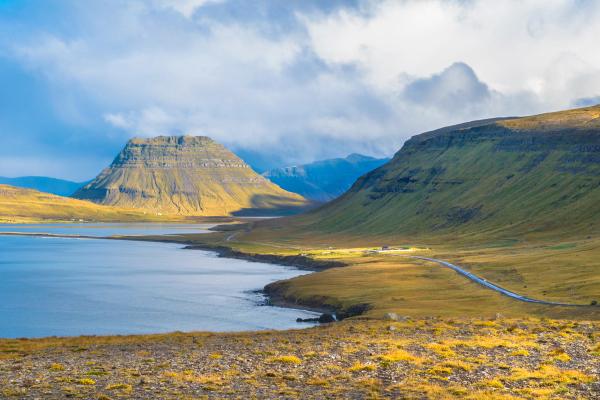
Beserkjahraun & Kirkjufell Mountain
The peninsula's north side features the mysterious Berserkjahraun lava field, while the mountain Kirkjufell is one of the country’s most photographed spots, an iconic symbol in Icelandic landscape photography.
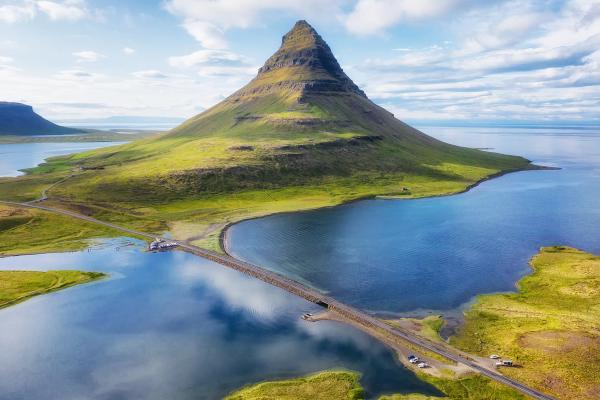
Snæfellsjökull National Park
At the tip of the peninsula, the Snæfellsjökull National Park is dominated by the magnificent subglacial volcano, the reason behind so much of the awesome landscapes here. Volcanic craters, lava fields, twisted cliffs, and awesome sea stacks.
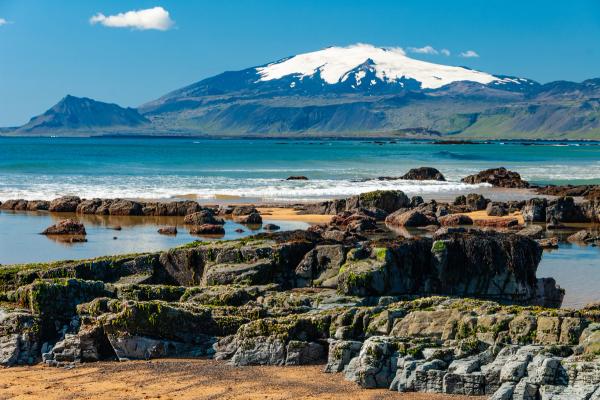
Húsafell and Hraunfossar
Head inland in West Iceland, and you’ll discover a lovely area of rivers and roads winding their way to Húsafell, the final outpost before the western highlands and the glacier Langjökull. Along the way, the waterfall Hraunfossar is a highlight, as is Deildartunguhver, Iceland’s most powerful hot spring.
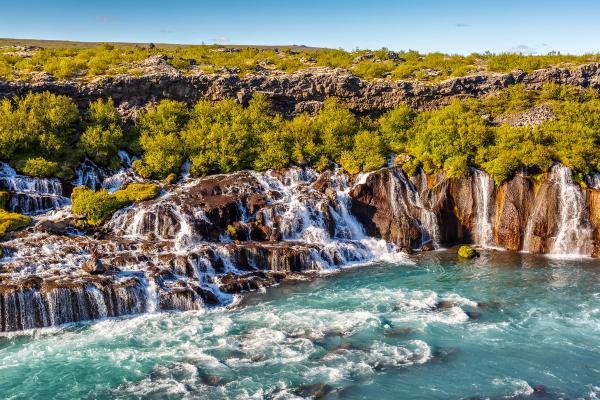
Where to Stay Along the Ring Road
Choosing the right accommodation can significantly enhance your Ring Road adventure. The road is dotted with a variety of lodging options catering to all travel styles and budgets, from cozy guesthouses to scenic campsites.
Hotels & Guesthouses
Most towns along Route 1 have a range of hotels and guesthouses. Larger towns like Vík, Höfn, Egilsstaðir, and Akureyri offer comfortable accommodations ideal for those who prefer a hot shower and warm bed after a day's drive. Guesthouses often serve homemade breakfasts and can provide helpful local tips for sightseeing.
Recommended overnight hubs include:
Vík: Perfect for exploring waterfalls and black-sand beaches.
Höfn: The gateway to glaciers and the spectacular Jökulsárlón glacier lagoon.
Egilsstaðir: Your base for exploring East Iceland and the scenic fjords.
Akureyri: A vibrant town with amenities and easy access to Lake Mývatn and whale-watching in Húsavík.
Grundarfjörður (Snæfellsnes Peninsula): Home to iconic Kirkjufell mountain and scenic coastal views.

Campsites
For a more budget-friendly and flexible experience, campsites are plentiful and well-maintained along the Ring Road. Iceland has around 200 official campgrounds, most open from mid-May through mid-September. Standard facilities typically include:
- Clean bathrooms and showers
- Outdoor kitchen areas with hot plates
- Drinking water
- Wi-Fi access in larger campsites
The average cost for camping is about 1,500–2,500 ISK ($10–20 USD) per person, per night. A Camping Card (approximately $190 USD, or €179) grants access to select campsites around Iceland and can save you money if you plan an extended stay.
Outside of the high season, there are limited campsites open; We’ve mapped out year-round campsites to help your planning if traveling outside peak season.
Wild camping is not allowed – you’re required to stay within a campsite each night.
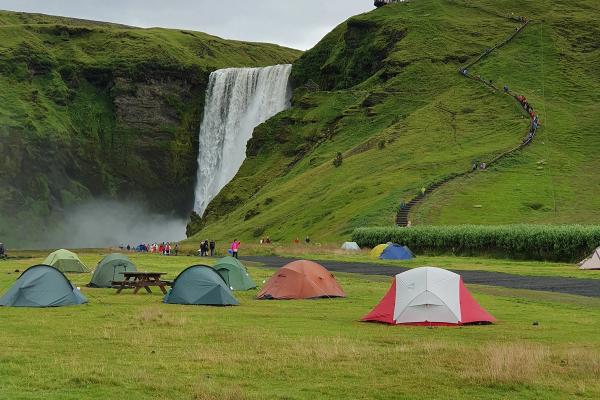
Cabins and Cottages
If you're seeking privacy and charm, Iceland’s cabins and cottages are perfect. Often situated in picturesque rural areas, they typically include kitchens and offer stunning views—ideal for self-catering stays and relaxation away from busy tourist spots.
Practical Tips for Booking Accommodation
- Book early if traveling June–August, as popular spots fill quickly.
- For winter trips, confirm accommodations are open year-round.
- Stock up on groceries in larger towns, especially if staying in isolated areas.
Note that most campsites operate from mid-May through mid-September, with limited options available outside these dates.
A camping pass (160 EUR) might save money for longer stays but check if your planned sites accept it. Sites usually collect fees in the evening or morning, and smaller ones often use honor-system payment boxes.
Remote stays often lack nearby places to eat. Check meal options or plan ahead when booking hotels or guesthouses in isolated areas. Some places might not have grocery stores nearby, so plan your meals in advance.

Is the Ring Road Worth It?
Driving Iceland's Ring Road is worth it – an adventure packed with glacier-carved landscapes, dramatic coastlines, and endless surprises around every bend. With careful planning and a bit of flexibility, your Icelandic road trip will become an unforgettable experience.

